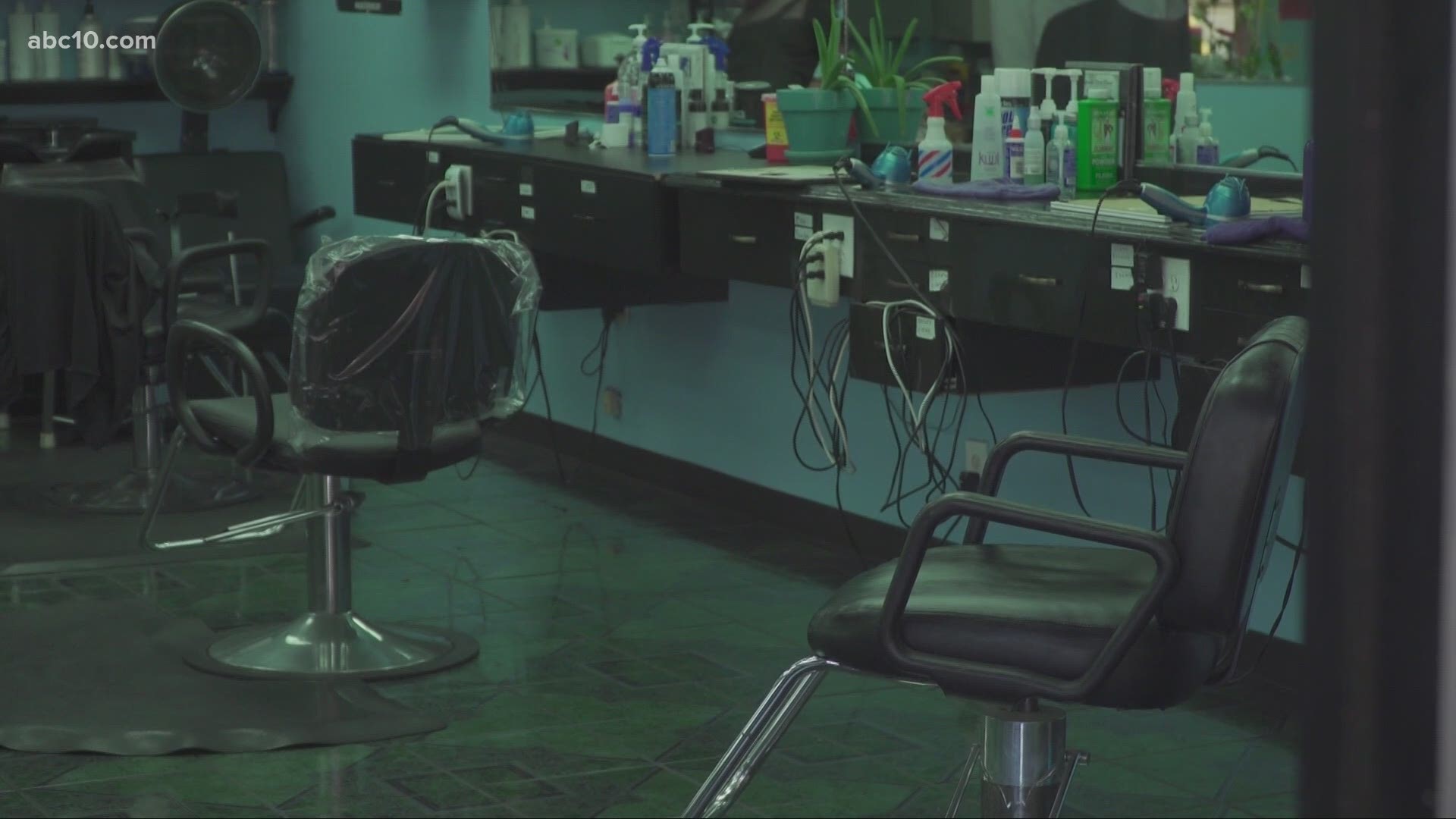SACRAMENTO, Calif. — The Greater Sacramento Region, which includes Sacramento, Yolo and Placer counties, will move into the state's stay-at-home order by the end of the week as the region's ICU capacity has fallen below 15%.
The order goes into effect at 11:59 p.m. Thursday, Dec. 10. The order will last for at least three weeks. The Greater Sacramento Region is the third region in California to fall below the 15% ICU capacity threshold. The Greater Sacramento Region will become eligible to exit the the order on Friday, Jan. 1, 2021.
As of Wednesday, Dec. 9, each region's ICU capacity sits at:
- Greater Sacramento Region: 14.3%
- Bay Area: 20.9%
- Northern California: 27.1%
- San Joaquin Valley: 4.2%
- Southern California: 9%
Since the start of the coronavirus pandemic, there have been 20,243 deaths in California.
Here's how you can track the ICU capacity in your region.
When will it go into effect?
The stay-at-home order will be triggered 24 hours after a region's ICU bed capacity drops below 15%. The order begins midnight on Friday, Dec. 11.
Who does the stay-at-home order affect?
The orders would affect all counties in the Greater Sacramento Region, including:
Great Sacramento Region:
- Sacramento County
- Yolo County
- Placer County
- Colusa County
- Sutter County
- Butte County
- Yuba County
- El Dorado County
- Amador County
- Alpine County
- Nevada County
- Sierra County
- Plumas County
How long does the order last?
The order will remain in effect for at least 3 weeks and, after that period, will be lifted when a region’s projected ICU capacity meets or exceeds 15%. This will be assessed on a weekly basis after the initial 3 week period.
Which businesses will close?
The new round of stay-at-home orders will require many non-essential businesses in the impacted regions to close. According to the California Department of Public Health, those businesses include:
- Bars
- Wineries and breweries
- Personal Services
- Hair Salons and barbershops
- Indoor and outdoor playgrounds
- Personal care services
- Museums, zoos, and aquariums
- Movie theaters
- Live audience sports
- Amusement parks
Which businesses can stay open with safety protocols in place?
- Critical infrastructure
- Schools that are already approved for in-person learning
- Medical and dental care
- Childcare and Pre-k
Which businesses can stay somewhat open, but require 100% of people to wear masks?
- Outdoor recreational facilities: Allow outdoor operation only without any food, drink or alcohol sales. Additionally, overnight stays at campgrounds will not be permitted.
- Retail: Allow indoor operation at 20% capacity with entrance metering and no eating or drinking in the stores. Additionally, special hours should be instituted for seniors and others with chronic conditions or compromised immune systems.
- Shopping centers: Allow indoor operation at 20% capacity with entrance metering and no eating or drinking in the stores. Additionally, special hours should be instituted for seniors and others with chronic conditions or compromised immune systems.
- Hotels and lodging: Allow to open for critical infrastructure support only.
- Restaurants: Allow only for take-out, pick-up, or delivery.
- Offices: Allow remote only except for critical infrastructure sectors where remote working is not possible.
- Places of worship and political expression: Allow outdoor services only.
- Entertainment production including professional sports: Allow operation without live audiences. Additionally, testing protocol and “bubbles” are highly encouraged.
What about gatherings?
Gatherings of any size are not allowed.
RELATED CORONAVIRUS CONTENT:
- San Joaquin Valley region to move into stay-at-home order as ICU capacity drops below 15%
- How California's COVID-19 exposure alert app works
- Gov. Newsom announces new, regional stay-at-home order based on ICU capacity
- What California's regional stay-at-home order means for salons, businesses and schools

















